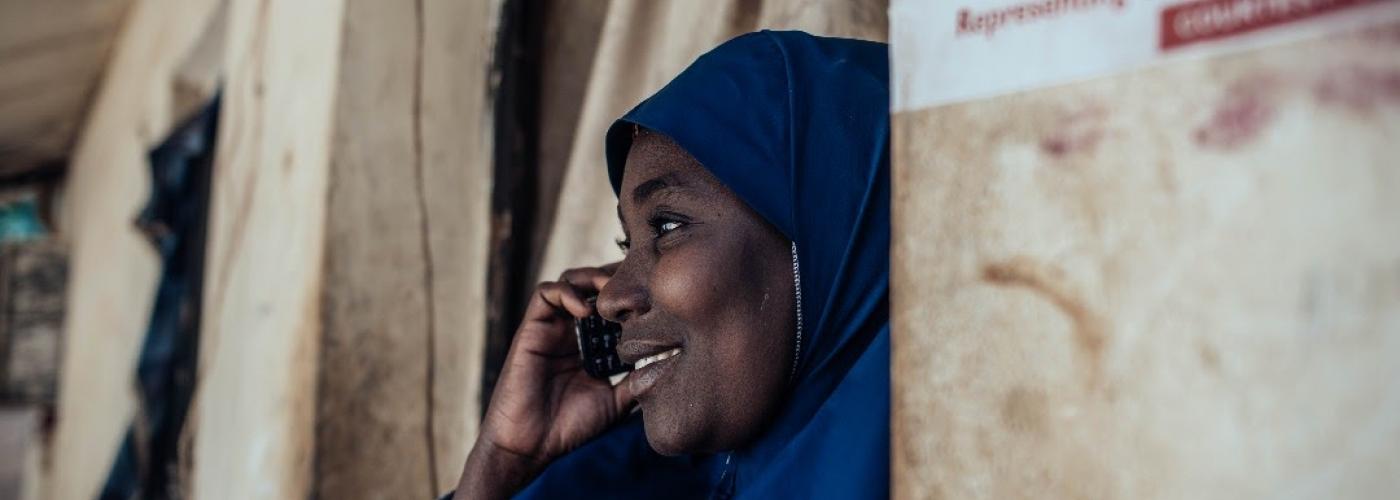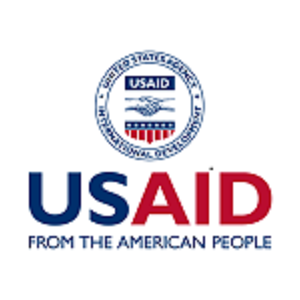USAID Official
A Gendered Approach to Technology Use for COVID-19 Response
Image

To address Novel Coronavirus (COVID-19) and stabilize economies, countries around the world will have to increasingly turn to digital technology. Governments are using mobile phones to share disease prevention tips and development and humanitarian partners are using digital tools for remote monitoring. While digitization is being promoted by the development and humanitarian community for an effective global health response, it is also naturally occurring in the market. For example, the use of mobile money has surged in West Africa as a result of COVID-19. The pandemic has provided a new incentive for people to go digital and operators have lowered barriers by making it cheaper and easier to sign up for internet-based services.
During this time of crisis, governments and development partners are rapidly responding to mitigate the potential harm of the COVID-19 pandemic. While there is pressure to act fast, diverse factors, including gender, must be considered across all response and recovery efforts. The decisions made now will have long-term effects on the stabilization and resilience of women and girls.
How will the development and humanitarian community ensure women and girls can safely access life-saving digital tools and services? How do we accurately account for women and girls in digital data collection? How do we optimize the potential benefits while mitigating potential risks to women and girls coming online? These and other considerations around gender and technology use are even more urgent now in light of the COVID-19 crisis.
Risk: Exacerbating the Gender Digital Divide
The gap between women and men using the internet and mobile phones is significant. In the least-developed countries, women are, on average, 30% less likely than men to use the internet; in some countries, that gap is as high as 80%. As COVID-19 increases countries’ reliance on digital services, men will benefit disproportionately since they will have greater access to life-saving and resilience-building information. Women and girls without access to digital tools and services will be left behind, exacerbating existing gender inequalities.
Closing the gender digital divide is more urgent than ever because COVID-19 is increasing society’s dependence upon information and communication technologies (ICTs) to address the pandemic and to keep economies running. The virus will substantially increase the cost of digital exclusion for the one billion women along with their families currently not using the internet. Therefore, the development community must be steadfast and deeply committed in their efforts to close the gender digital divide.
Risk: Increased Online Harm
Although women are often economic providers and caretakers—responsible for family, community health, and education—they are often among the most vulnerable to shocks and the resulting economic impact. Women are also more at risk for gender-based violence (GBV), which is on the rise as COVID-19 increases stress around economic insecurity and social isolation.
Digital technology could, and should, be used as a channel to provide information, outreach, and support, but only when women and girls can safely access and use them. However, because digital technology has been linked to violence against women and online sexual harrassment, every digital intervention should be assessed with a gender lens focused on mitigating potential harm. With increased time at home and online, women, and in particular young girls, are at increased risk of technology-facilitated violence and online GBV during the COVID-19 health crisis.
Risk: Excluding Women and Girls from Data Collection, Analysis, and Sharing
The COVID-19 pandemic is heightening the ever-present need for more relevant data on gender dynamics. Collecting gender data and increasing data sharing is a vital first step to get women the services they need, such as accurate information on how to protect themselves and their loved ones or access to GBV outreach resources. While sex-disaggregated data may be the first step in an effective response, the development and humanitarian community needs much deeper data on intersectionality and social factors.
Although global data has shown that men are more at risk for contracting and dying of COVID-19, 70% of global healthcare workers are women. As countries around the world witness increased infection rates among frontline healthcare providers, it is clear that women are at an increased risk. A recent study shows, through emerging data, a substantial spike in infections in female healthcare workers in Spain and Italy. We need to adopt a gender-integrated approach to data collection and analysis, because without data on the gender differences of COVID-19 cases, trends and risks can be obscured, rendering response management ineffective.
Development and humanitarian stakeholders need to understand the nuance of what is happening in both response and recovery, the magnitude of the problem, and how gender dynamics may play out differently in various contextual settings. It is evident that rapid data collection is needed. However, it should be done intentionally and carefully, as collecting data on gender dynamics, such as data on GBV, is ethically complex.
Key Considerations on Applying a Gender Lens to Digital Development & COVID-19
-
Refer to the Principles for Digital Development when applying digital technologies to develop development and humanitarian programs. Two particularly important principles when it comes to applying a gender lens are Design with the User and Be Data Driven. User-centered design starts with getting to know the people you are designing for through conversation, observation and co-creation, which is key in trying to understand gender dynamics around technology use. While it may be difficult to communicate in-person due to COVID-19 restrictions, it is crucial to ensure inclusivity and equity in remote design. In addition, for an initiative to be data driven, quality information on diverse perspectives must be available to the right people when they need it, and those people must use that data to take action.
-
Addressing the gender digital divide is critical to stabilization. Women multiply development impact by reinvesting back into their families and communities. Advancing women’s digital connectivity therefore ensures their economic empowerment, builds prosperity and peace, and increases household stability during and after crises like COVID-19.
-
Consider how to approach data collection with a gender lens when collecting data digitally. For guidance, check out FSG’s Four Ways to Incorporate a Gender Lens in Your Measurement and Evaluation Efforts.
-
Ensure programs incorporating digital technologies for data collection or outreach examine gender dynamics around access and use of digital technology. As countries become more digitally reliant, the gender digital divide will limit and undermine development efforts if not addressed responsibly, considering women's safety and security a top priority.
Going Forward
On April 15, 2020, USAID Deputy Administrator Bonnie Glick announced the launch of the Agency’s first Digital Strategy. Through the Digital Strategy, USAID aims to responsibly invest in digital infrastructure and digital information systems, and to encourage partners to do so, ensuring that they are inclusive and sustainable. With an increased focus on digital development in USAID-funded programs, it is critical that we design and implement those digital systems responsibly. Going forward, a gender lens must be applied from program design, to implementation and across the data lifecycle, to ensure that we do not leave half of the population behind in our digital development efforts. No country will be self-reliant if members of its citizenry cannot benefit equally from the gains of a global digital ecosystem.
This article was co-authored by Erica Gendell and Rebecca Saxton-Fox.
Erica Gendell is a Program Analyst on the Development Informatics team in the Center for Digital Development, U.S. Global Development Lab, USAID.
Rebecca is the Lead of the Development Informatics Team in the Center for Digital Development, U.S. Global Development Lab, USAID.


